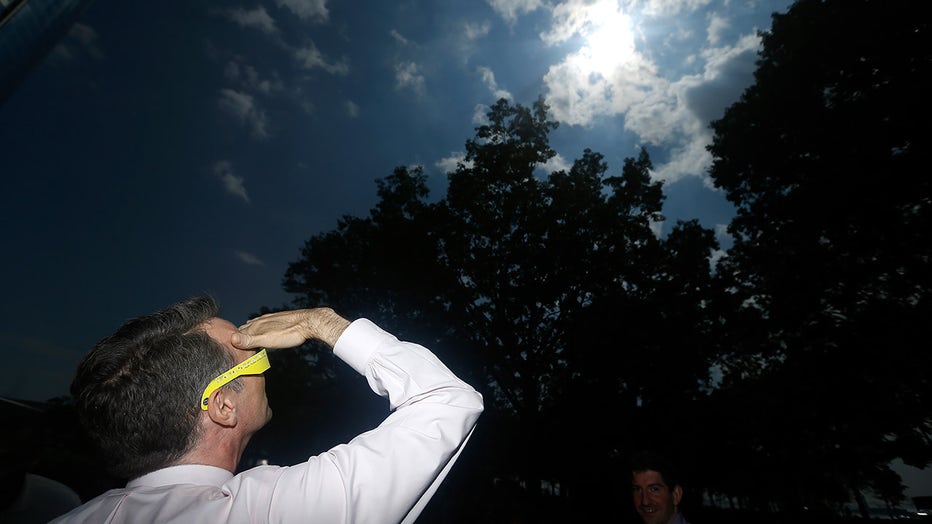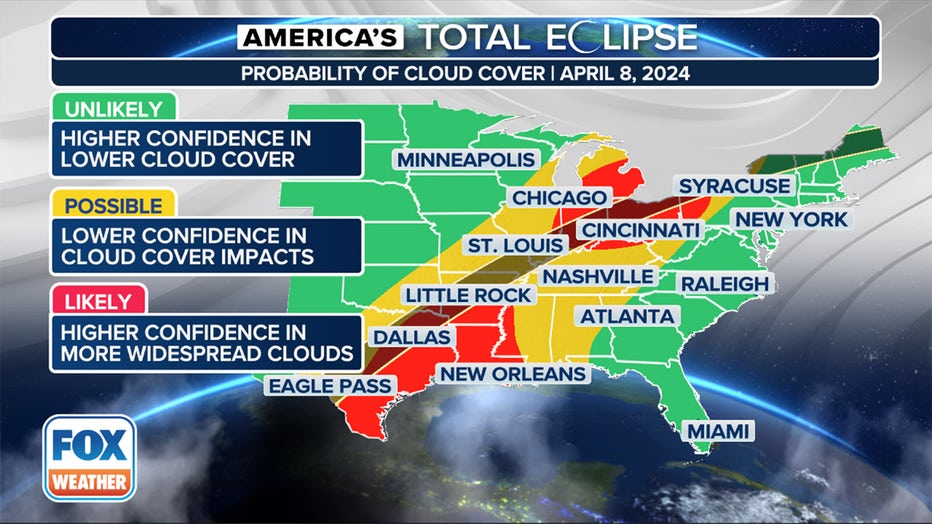How to get the best view of the solar eclipse

How FOX Weather will be covering the eclipse
Robert Ray explains some of the gear he'll be using to shoot the eclipse, and what you can get for yourself to do the same thing.
HUDSON, Ohio - In order to enjoy next week's total solar eclipse, it may seem as simple as walking outside and looking up. But if you want to make sure that you have the clearest possible view of the sky, here’s how you can plan ahead.
When is the solar eclipse?
The next total solar eclipse is on Monday, April 8, 2024. The 115-mile-wide path of totality – the region in which the moon will appear to completely block the sun – will stretch from south Texas up through southern Illinois, then over to Niagara Falls and northern Maine. However, millions of people outside of that corridor will still see a partial eclipse.
Totality will be around 1:30 p.m. local time in San Antonio, 1:50 in Arkansas, then around 3:05 p.m. in Indianapolis, 3:15 in Cleveland, and 3:30 in Maine.
LINK: These U.S. cities are in the path of totality
How high will the eclipse be?
At that time of day, the sun will be pretty high in the sky. As always, though, the further north you are, the lower in the sky the sun will appear.
For example, in Austin, the sun will be at 67 degrees up from the horizon at the peak of totality. Remember, 90 degrees is straight up, so 67 degrees is just over two-thirds up into the sky from the horizon.
In Cleveland, meanwhile, the sun will be slightly lower, at only 49 degrees – just over halfway up in the sky.

File: A man views the solar eclipse at Battery Park on August 21, 2017 in New York City. (Photo by John Lamparski/WireImage)
Are there any trees in the way?
To determine this, you’ll need to know two things: The locations of any trees where you’re watching from, and the direction where the eclipse will be.
The first is easy. If you’re watching from home, go outside and look around. Chances are, you already know where your trees are. If you’re planning to head somewhere else, do your best to scout out the location ahead of time; Google Maps Street View or other tools may help.
The second thing to know is the direction of the eclipse. For most viewers in the path of totality, the sun will be in the south or southwestern sky.
For much of Texas, the sun will be to the south. In the Northeast, the sun will be more to the west.
Combining that information with the altitude data, you can begin to get a good sense of where exactly the sun will be during the eclipse.
You can use the chart below for data or try a tool like the Photographer’s Ephemeris to get data for your specific location. Plug in your location and scroll ahead to April 8. The basic version of the tool is free but upgraded versions include 3D views and other features to give you a better sense of your view.
Are there any buildings in the way?
Buildings don't tend to move, so again, you can probably get a sense of that by knowing your surroundings ahead of time and using the information above. But if not, another app could help you.
ShadeMap is a web-based tool that uses a map interface combined with building height data to simulate shadows cast by buildings. You can use the slider to zoom through the day and see how shadows on the ground move as the sun crosses the sky.
The basic tool is free. An upgraded version also includes tree data.

File: A woman watches the solar eclipse in front of the skyline of Manhattan as seen from Hoboken, New Jersey on August 21,2017. (Photo by Kena Betancur/VIEWpress/Corbis via Getty Images)
I was told there would be no math!
If degrees and angles and compass directions aren’t for you, you can always step outside in the afternoon on the days leading up to the eclipse and see where the sun is.
Its location won’t change much from day to day.
Eclipse weather forecast

Of course, all of this effort means nothing if it’s cloudy or rainy. While we won’t know the exact weather forecast until a few days out, FOX Weather says early forecasts for the total solar eclipse now show a higher probability of clouds threatening parts of the south and Great Lakes, while the Northeast and New England trend in the right direction with an improving outlook for less cloud coverage.
LINK: Total solar eclipse forecast shows who has best chance for clear skies on April 8th

